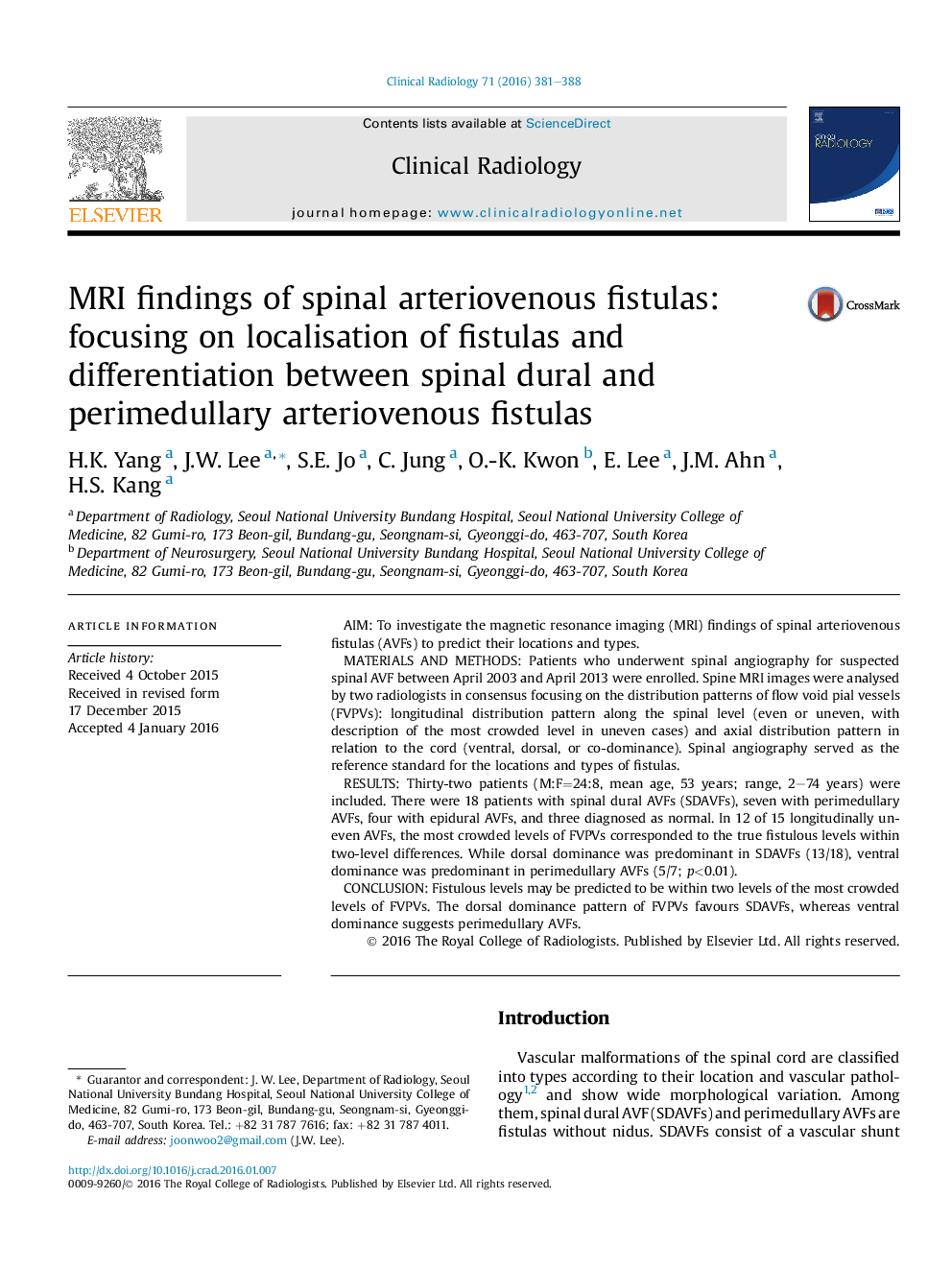| Article ID | Journal | Published Year | Pages | File Type |
|---|---|---|---|---|
| 3981404 | Clinical Radiology | 2016 | 8 Pages |
•MRI findings are helpful in localizing the level of spinal AVFs.•Spinal dural and perimedullary fistulas can be differentiated with MRI findings.•Localization and prediction of type with MRI help planning diagnostic angiography.
AimTo investigate the magnetic resonance imaging (MRI) findings of spinal arteriovenous fistulas (AVFs) to predict their locations and types.Materials and methodsPatients who underwent spinal angiography for suspected spinal AVF between April 2003 and April 2013 were enrolled. Spine MRI images were analysed by two radiologists in consensus focusing on the distribution patterns of flow void pial vessels (FVPVs): longitudinal distribution pattern along the spinal level (even or uneven, with description of the most crowded level in uneven cases) and axial distribution pattern in relation to the cord (ventral, dorsal, or co-dominance). Spinal angiography served as the reference standard for the locations and types of fistulas.ResultsThirty-two patients (M:F=24:8, mean age, 53 years; range, 2–74 years) were included. There were 18 patients with spinal dural AVFs (SDAVFs), seven with perimedullary AVFs, four with epidural AVFs, and three diagnosed as normal. In 12 of 15 longitudinally uneven AVFs, the most crowded levels of FVPVs corresponded to the true fistulous levels within two-level differences. While dorsal dominance was predominant in SDAVFs (13/18), ventral dominance was predominant in perimedullary AVFs (5/7; p<0.01).ConclusionFistulous levels may be predicted to be within two levels of the most crowded levels of FVPVs. The dorsal dominance pattern of FVPVs favours SDAVFs, whereas ventral dominance suggests perimedullary AVFs.
